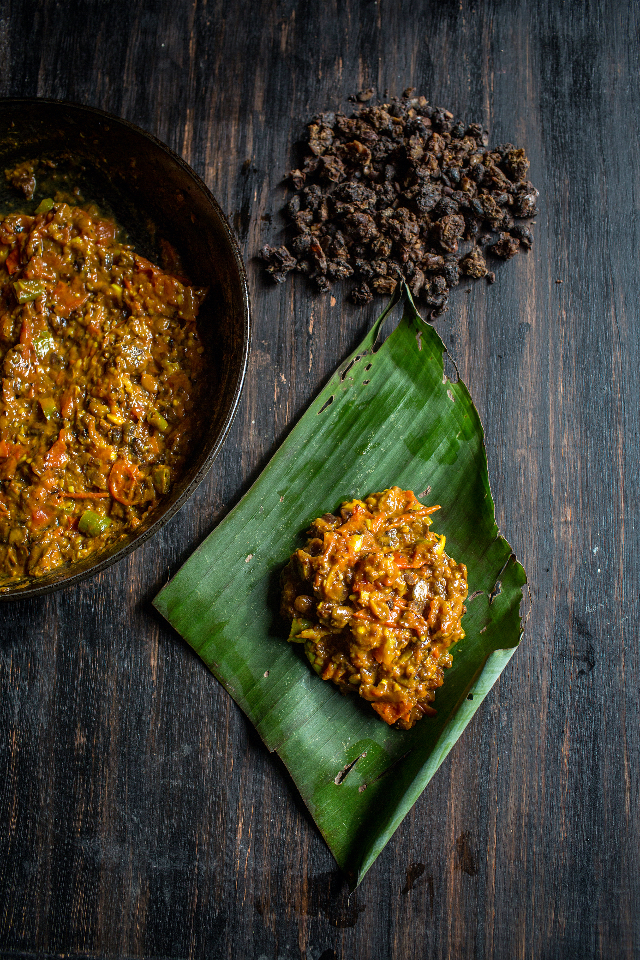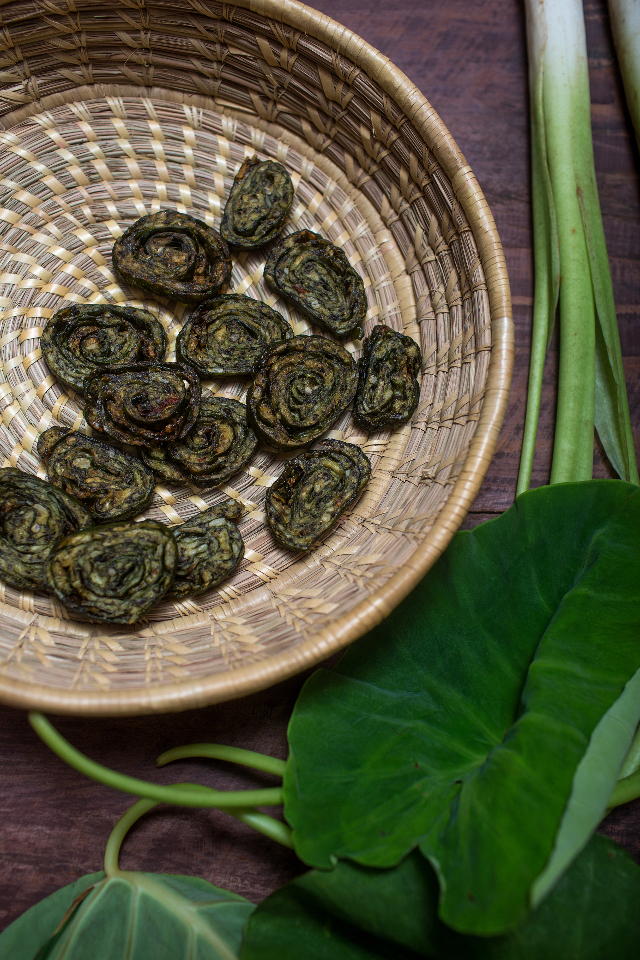Flavours from Nepal

Growing up in a family composed of two cultures, I learned to juxtapose the differing cultures of my parents through food, and understand and appreciate their contrasts. My mother’s Newa community reveres alcohol and buffalo meat, which are integral to the culture and even offered to the gods. But my father’s Brahmin community abstains from alcohol and buffalo meat as these are considered impure and socially unacceptable. The two societies celebrate festivals and rituals in different ways and have varied food traditions.
Despite these differences, my family embraces both cultures. I grew up blending the two food cultures and traditions together. Food is the epitome of culture, and in Nepal it has deep cultural and religious significance, being the defining feature of cultural identity.
Nepal has over 100 different castes and ethnicities, each with its own food culture deeply rooted within its own socio-ecological milieu. Because of its geographical variance, Nepal has a great variety of flora and fauna, including crops and animals that are raised for food, which in turn has led to variegated cuisine.
Many indigenous communities in Nepal have their own culinary practices that are largely defined by the environment they live in, the availability of resources, the state of the economy, and centuries of history.
But little is written about the wonderful variety of food cultures across these ethnicities, and Nepali cuisine is largely represented by a handful of recipes.
In addition to indigenous practices, migration, trade, and cross-border influences have also shaped Nepal's gastronomy. For centuries, Nepalis have engaged in trade between the Tibetan Plateau and the Gangetic Plains. While many of Nepal’s valleys and mountains appear isolated, traditional recipes are a testament to the movement of people and cross-cultural exchanges.

The Tarai’s food culture relates to North India as it is historically, geographically, and culturally contiguous. The food in Nepal's northern hinterland is closer to Tibet. Over the years, many Tibetan and Indian communities have also migrated to Nepal, bringing along their recipes.
Muslim communities, some of which came from Kashmir and Central Asia, have also blended their cuisines with local practices, customs, and ingredients.
In Nepal, food practices are linked to one’s religion, caste, and ethnicity. Hindus from supposedly 'upper-caste’ households categorise foods according to chokho (pure) and bitulo (impure).

For instance, kodo (finger millet) is considered impure and abstained during religious ceremonies. Whereas for other groups, millet is a staple and also made into alcohol that is offered to ancestral deities. Alcohol and pork consumption is a defining feature of non-Hindu ethnicities and the 'lower-castes’.
In a society stratified by caste and class, some food practices are used as a tool for discrimination and social exclusion. The upper-caste not only dictate the supremacy of their social norms but also their food culture. They look down upon those who eat pig and buffalo, and drink alcohol. What you eat has historically defined class and vice versa. The Dalit are considered the 'lowest’ in the caste hierarchy.
As with most cultures around the world, the social practice of eating together is at the centre of festivities and celebrations in Nepal. Kathmandu’s Newa community celebrates numerous festivals and jatras (chariot processions or carnivals), and for each celebration, a bhoye (feast) is an indispensable element.


The largest Hindu festival Dasain, the Sakela festival of the Kirats, and many others are celebrations of planting and harvesting of crops that follow the monsoon cycle. In fact, monsoon shapes the ways of life in Nepal. Yomari Punhi, a Newa festival that involves eating yomari (a steamed rice flour cake filled with sweet molasses), and Nwagi, a festival offering the new harvest to ancestral deities before consuming in many communities, are essentially harvest celebrations.
At times, precise delicacies are designated for specific festivals and they pay close attention to seasonally available produce. During the winter festival of Maghe Sankranti, varieties of tubers such as sweet potato, yam, and taro are consumed alongside ghee and processed jaggery in the belief that they prevent colds.
In recent decades, dal-bhat-tarkari, commonly referred to as khana (also the word for ‘food’), has become a staple meal across Nepal. Dal is lentil or bean soup, bhat is cooked rice, and tarkari is cooked vegetable. The meal is at times accompanied by a meat curry and often eaten with a fermented or freshly-made achar as relish.



However, many mountain communities traditionally did not eat rice as a staple. Buckwheat, barley, and naked barley once made up the daily diets of the Sherpa, Tamang, and Thakali. The Newa, Magar, and Gurung consumed millet and maize as their primary staples. Apart from rice, maize, buckwheat, millet, and other grains are usually ground into flour and made into roti (unleavened flatbread) and dhindo (thick porridge). In the Himalayan region, tsampa (roasted barley or naked barley flour) is a staple and is usually eaten with su-cha (salty butter tea).
As rice has become more mainstream and commercially available, it has displaced other traditional and nutritious staple grains such as millet, buckwheat, barley, sorghum, and amaranth. Unfortunately, even many of the local rice varieties are being replaced by commercial varieties.
Foraging and hunting still contribute a significant portion to diets. In the mountainous regions where less fertile soil and harsh climates mean crops cannot support residents all year round, foraging is essential to meet local needs.

The food culture of the Tharus is inextricably linked to rivers, ponds, canals, and swamps. In the mid-hills, along with fishes, paha (freshwater Himalayan frogs) are delicacies of the Magar and Gurung.
Insects, on the other hand, are only sparsely consumed now. Such indigenous foraging practices are regrettably disappearing.
Until recently, Nepalis ate meat occasionally, generally during festivals and celebrations. Buffalo meat is of particular importance to the Newa community. Many hill communities have a variety of pork-based recipes. Yaks, mountain goats, and sheep are reared for meat in the mountainous region. Khasi (castrated goat) and chicken are common and consumed by most communities.
Some indigenous groups traditionally ate beef, but cow slaughter was outlawed in the early 19th century by the Hindu monarchy, and it remains proscribed today.
Milk and dairy products such as ghee, yoghurt, and buttermilk are essential in the cuisines of Hindu Khas-Pahadi, Maithil, Sherpa, and other mountainous communities, which historically followed pastoral traditions.


Fermenting, smoke-drying, and sun-drying are common in Nepali food culture, which probably came from the need to preserve food. Fermented achar is also an attempt to preserve food. Vegetables such as radish, cauliflower, lapsi (Nepali hog plum), bamboo shoots, and chillies are pickled and stored.
The Rais and Limbus ferment soybeans to make kinema and then dry it for later use. Gundruk (sun-dried fermented greens) and masyaura (sun-dried black lentil paste and taro leaf nuggets) are widely prepared for preserving greens for the dry season.
The Thakali sun-dry buckwheat greens and ground them to make dhopra, which is consumed as a soup. The Tharu preserve greens for the monsoon season when the fields are flooded and greens are scarce.
While in some communities, their economic prosperity and agricultural abundance have added richness to food; in others, limited crop diversity and the necessity for preservation have led to the development of unique delicacies and flavours.
A wide variety of spices, herbs, and flavouring ingredients used in cooking also reflects the richness of Nepali flavours. Mustard oil, ghee, and preserved animal fat have been used as cooking mediums and flavouring ingredients since ancient times. But today, the use of industrially processed sunflower and soybean oil is widespread.


Spices such as garlic, ginger, onion, coriander, cumin, turmeric, and chilli are commonly used across Nepal, but there are also many lesser-known spices and flavouring ingredients distinctive to communities or regions. The Sherpas use the whey dregs of buttermilk, known as serkam. They also ferment it to make somar, and milk cream to make shosim, both of which add a sharp pungent flavour to soups and achar.
In Nepal’s western parts, bhang (hemp seeds) is widely used to make achar. The Tharu of the eastern Tarai use aalash (flaxseeds) to flavour curries and achar. Timmur and jimbu (aromatic wild Himalayan allium) are among the important flavouring ingredients in Thakali cuisine, and also commonly used by hill communities. The Kirat burnt ash from a rooster’s inner feathers to use as flavouring to make a delicacy known as wachipa or wamrik.
Nepali cuisine is characterised by the one quality that distinguishes almost every facet of Nepali life: its diversity. With wide geographic variance, ethnic diversity, rich culture and heritage, Nepali food culture is intricately and extraordinarily unique. Nepal has managed to carve out a unique niche for itself, borrowing not just from its neighbours, but also cultures farther afield.
The identity, culture, religion, ethnicity, and beliefs of the communities are connected to food, it is imperative to understand and preserve Nepal’s food culture.
Excerpt from Prashanta Khanal's book Timmur: Stories and Flavors of Nepal

Timmur: Stories and Flavors of Nepal
By Prashanta Khanal
Fine Print 2022
297 pages
Regular hardback Rs2,500
Special hardback with slipcase Rs3,000
Read more: Getting high on High Mountain Tea, Sonia Awale




